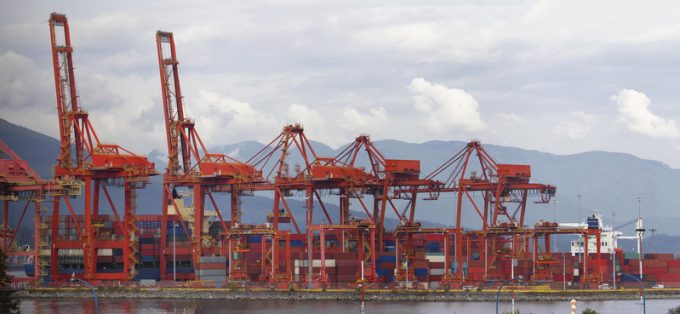Liners unveil Asia-Europe FAK price hikes to arrest steady rate decline
Container shipping lines are looking for a hike in Asia-Europe spot freight rates, announcing a ...

Growth at US west coast ports has been overshadowed by increases for the Canadian hubs of Vancouver and Prince Rupert and, to a lesser extent, by east coast ports.
Drewry’s 10-month analysis of the Asia-North American headhaul trade reports that between January and October US west coast imports increased 1.4% year-on-year, while east coast ports recorded a 6.6% volume rise.
However, the Canadian berths saw a massive 18% hike in Asian imports as the US terminals faced an “uphill struggle” to “limit the seepage”, said Drewry.
A report last year from the US Federal Maritime Commission (FMC) noted several reasons for the continued migration of US traffic to Canadian west coast ports, including the shortage of truck chassis (exacerbated by the introduction of mega-containerships), a shorter transit time from Asia and an efficient rail service to Chicago and the US Midwest hinterland.
The transpacific headhaul 12-month rolling average showed growth of 5.7% as of October, and Drewry said it now expected trade to surpass the annual rate achieved in 2016 of 4.6% growth.
Nevertheless, despite headhaul ship utilisation levels remaining at just over 90% – a load factor usually sufficient to support profitable freight rates – spot rates on the trade have not responded.
Indeed, members of the Transpacific Stabilization Agreement (TSA) – which will only represent 65% of the trade after the resignation of Maersk Line – have announced no less than 18 general rate increases (GRIs) this year so far, all of which have failed to stick.
The failure of the GRIs, of between $400 and $1,000 per feu, has seen USWC spot rates tumble from a peak of over $2,200 per 40ft in January to some $1,100 recently. And for east coast ports, rates also halved, to around $1,800.
In fact, this disconnect between load factors and rates was in evidence even in July and August when transpacific eastbound ships were reported to be “running full”.
Although the Shanghai Containerized Freight Index (SCFI) recorded a 9.7% uplift for the US west coast last week and a 9% increase for east coast port rates, analysts do not expect the trend to last.
Drewry said its prognosis was despite the fact that the number of blanked sailings on the transpacific trade, the capacity on offer had “continued to creep up”.
According to its preliminary analysis, capacity will have increased by around 10% in the final months of this year and into January 2018, exerting more downward pressure on freight rates.
Meanwhile, Alphaliner said last week the transpacific carriers must introduce the “capacity discipline” that had once been imposed by the TSA, or risk rates falling to an “unprecedented low”.
Transpacific carriers will be “pinning their hopes on a strong pre-Chinese New Year cargo rush”, suggested Drewry, noting that the container lines need to “revive flagging spot rates” before the annual contracting season begins in March and April next year.
Comment on this article